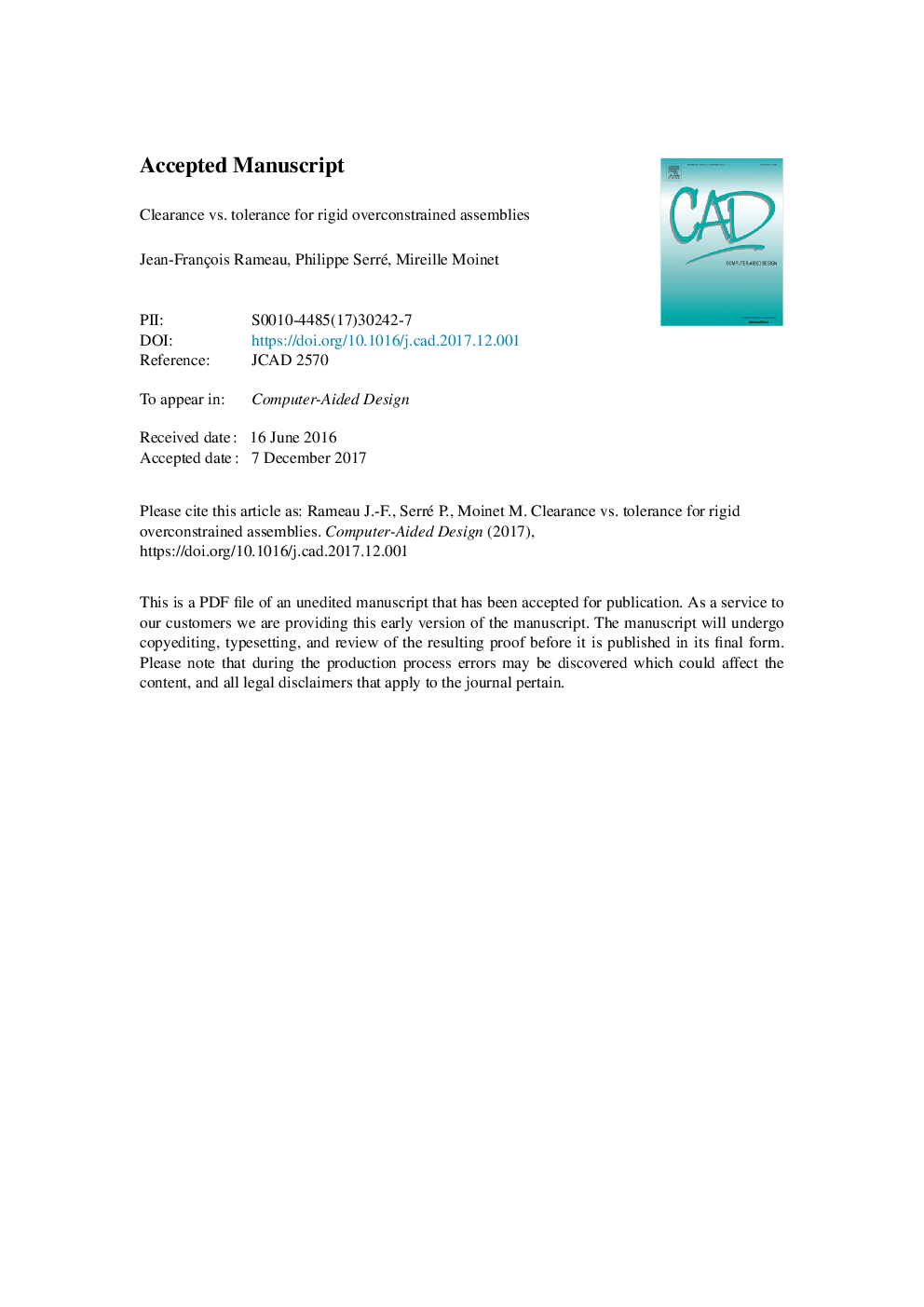| Article ID | Journal | Published Year | Pages | File Type |
|---|---|---|---|---|
| 6876447 | Computer-Aided Design | 2018 | 36 Pages |
Abstract
In order to manage quality, companies need to predict performance variations of products due to the manufacturing components deviations. Usually, to enable the assembly of overconstrained mechanical structure, engineers introduce clearance inside joints. We call mechanical assembly, a set of undeformable components connected together by mechanical joints. This paper presents a solution: firstly, to compute the minimum value of clearance for any given components sizes, and, secondly, to simulate variation of the minimum clearance value when the components dimensions vary between two limits. To achieve this goal, a regularized closure function G is defined. It depends on dimensional parameters, u, representing components dimensions, on positional parameters, p, representing components positions and on clearance parameters, j, representing mechanical joints clearance. A constrained optimization problem is solved to determine the minimum clearance value. An imaginative solution based on numerical integration of an ordinary differential equation is proposed to show the clearance variation. The method is designed to be used during the preliminary phase of overconstrained assemblies design. An advantage is the small number of input data unlike the tolerance analysis dedicated software.
Related Topics
Physical Sciences and Engineering
Computer Science
Computer Graphics and Computer-Aided Design
Authors
Jean-François Rameau, Philippe Serré, Mireille Moinet,
